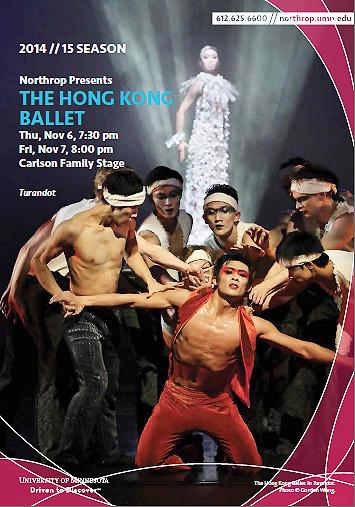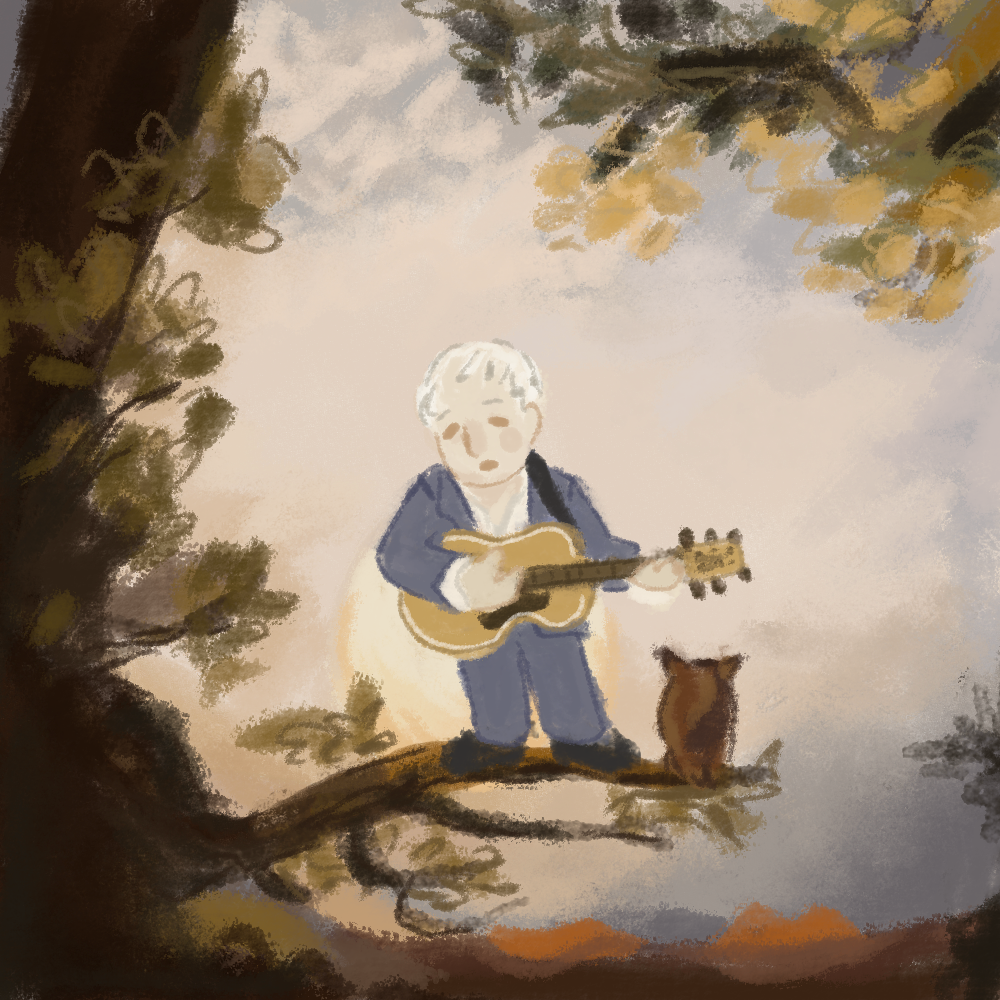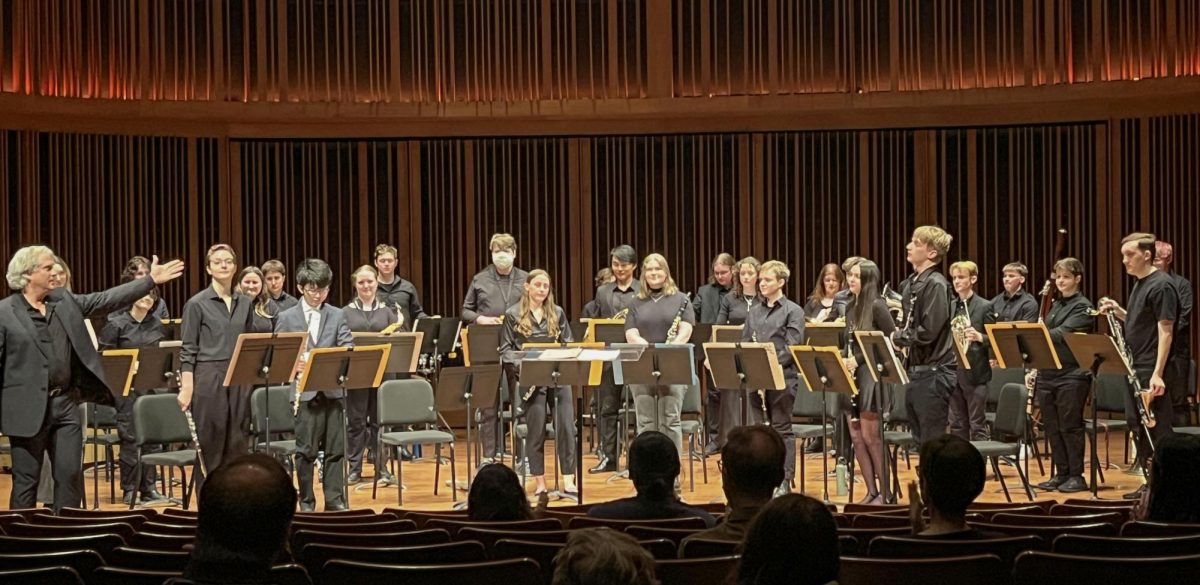
When given the opportunity to see the Hong Kong Ballet perform Giacomo Puccini’s Turandot at the University of Minnesota’s Northrop Theater, I had no idea what to expect. Having no experience with Puccini or Turandot, I assumed my experience seeing this show would be similar to viewing other classical ballets I loved since I was young: the beauty of Giselle, the heartbreak of Romeo and Juliet and the charm of Sleeping Beauty. However, I knew I was in for a completely different experience when I arrived at the theater and was ushered into a pre-performance panel discussion with the Artistic Director of the company, Madeleine Onne. Her discussion of the Hong Kong Ballet’s unique approach to their performance, highlighting the technique so pointedly established in dancers trained in China, while bringing the dynamic artistry of the international influence of the company, served as the perfect precursor to this unconventional show.
The ballet tells the story of a beautiful but cold and stoic princess who poses three riddles to each of her suitors. She then kills them when they cannot guess the correct answers. The ballet opens with a chilling scene as the chorus (or corps de ballet) performs ominous and robotic variations, while a young prince is prepared for execution after failing to guess Turandot’s riddles. As the prince struggles with his executors, a beautiful “slave girl,” Liu enters with Timur, the blind man she cares for, and Calaf, his son, whom Liu is in love with. As Calaf and Liu tend to Timur, Turandot enters the scene and orders the prince to death. In an emotional scene of strife, the prince is executed. However, upon seeing Turandot for the first time, Calaf immediately falls in love with her beauty and power, much to the chagrin of Liu, his admirer.
Despite the efforts of Liu and the ghosts of Turandot’s past suitors whom she murdered, Calaf decides he must attempt to solve her riddles and take Turandot’s hand in marriage. Calaf successfully solves her riddles. Despite his victory, Turandot refuses to marry him, a cruel twist of fate for the desperate Calaf. She decides she will only marry him if he poses a riddle he cannot solve. Calaf demands that Turandot must guess his name by dawn, and if she cannot, she must marry him. Turandot spends the entire evening anxiously attempting to solve the riddle, and in a frantic attempt to guess Calaf’s name, tortures Liu to find the answer. Liu refuses to divulge Calaf’s name and tragically kills herself to keep his secret.
By the morning, Turandot still has not guessed Calaf’s name and thus is obligated to marry him. Upon kissing him for the first time, Turandot realizes that his name is not only Calaf, but also metaphorically, “Love.” In this moment, the word “love” in metallic and bold letters dropped down to serve as the backdrop for the scene. Although the tragic loss of Liu ends the ballet with sadness, the beauty of Turandot and Calaf’s love is enough to ameliorate this tragic loss and bring the audience out of their seats by the end of the show.
The technical expertise of these dancers was unparalleled, and each dancer performed with a palpable spirit. Although Liu Yu-Yao, who danced the starring role of Turandot, danced with incredible strength, her performance was rivaled if not outshined by Liu Miao-Miao, playing the part of Liu, the slave girl. Perhaps Miao-Miao’s role was predisposed to emotion in a more tangible way than Yu-Yao’s, making her performance feel more relatable to the audience; however, one cannot help but suspect that Miao-Miao felt a deeper connection to her role of unrequited lover, than Yu-Yao as a cold and evil princess. While Yu-Yao commanded the stage with her steely gaze and striking movements, Miao-Miao exacted the attention of the audience with her outpouring of emotion and incredible range in both technical skill and revealing body language. While the shocking moments of staging caught the audience off guard at certain points, the dancing of the company members never wavered, confused or disappointed, but only amazed with its consistency and vitality.
Although on its surface this plot seems fairly typical of an 18th century classical ballet, the aesthetic choices of the ballet’s staging gave this conventional plot a modern twist. Beautifully danced and choreographed, Turandot was one of the most visually interesting ballets I have seen. The set and costume choices were completely untraditional, contrasting the classical ballet scenes typically characterized by romantically painted scenes of 17th century peasant or royal life. This piece had richness and depth not developed in these more traditional works. As Turandot awaited Calaf in her ancestor’s tomb, for instance, she was perched atop a massive head, like one might see on a mannequin, and throughout the scene managed to dance atop the head. The surface area was so tiny it could support no more than one dancer—truly an incredible technical feat. The scenes were modernist in style, often incorporating geometric shapes and letters, and remaining simple and clean without superfluous pieces. Much of the ballet was danced with only a large moon serving as the backdrop to the dancers’ movements, and in part of the ballet, the set was dominated by a massive wall of what looked like bead curtains, draping from the ceiling to the floor in massive ropes of gems. Also visually shocking were the costumes, ranging from non-aesthetic patchwork rags worn by Timur and Liu, the peasant characters, to dresses encrusted with crystals and a cape so expansive it covered the entire stage and required six dancers to hold its train as Turandot danced.
At first, the untraditional style of this piece shocked me. However, as the performance continued, my appreciation for the contemporary twist on the visual aspects of this traditional ballet grew, resulting in amazement at the ability of this company to combine the classical and modern in such a nuanced way. I am so appreciative of the challenging and simultaneously beautiful performance this talented company produced, exemplifying the strength of dancers’ bodies and the power of staging choices in developing a rich performance. This performance from the Hong Kong Ballet was an incredible experience, certainly expanding my horizons as a dancer and lover of the arts.
I absolutely recommend that Macalester students take advantage of the performances the Northrop is offering this season, and if anyone is given the chance to see the Hong Kong Ballet in the future, by all means take it! Expect and embrace the unexpected.








Brandon Gill • Sep 6, 2019 at 2:18 pm
I read this paragraph fully on the topic of the resemblance of most recent and previous technologies, it’s amazing article.